Key takeaways:
- Understanding a growth mindset involves recognizing that abilities can be developed through effort and dedication.
- Implementing strategies like regular feedback, setting incremental goals, and encouraging collaboration can significantly enhance student growth.
- Creating a supportive environment through trust, positive reinforcement, and tailored resources fosters engagement and nurtures a love for music.
- Measuring growth mindset development can be achieved through reflective journals, check-ins, and performance critiques, focusing on progress rather than perfection.
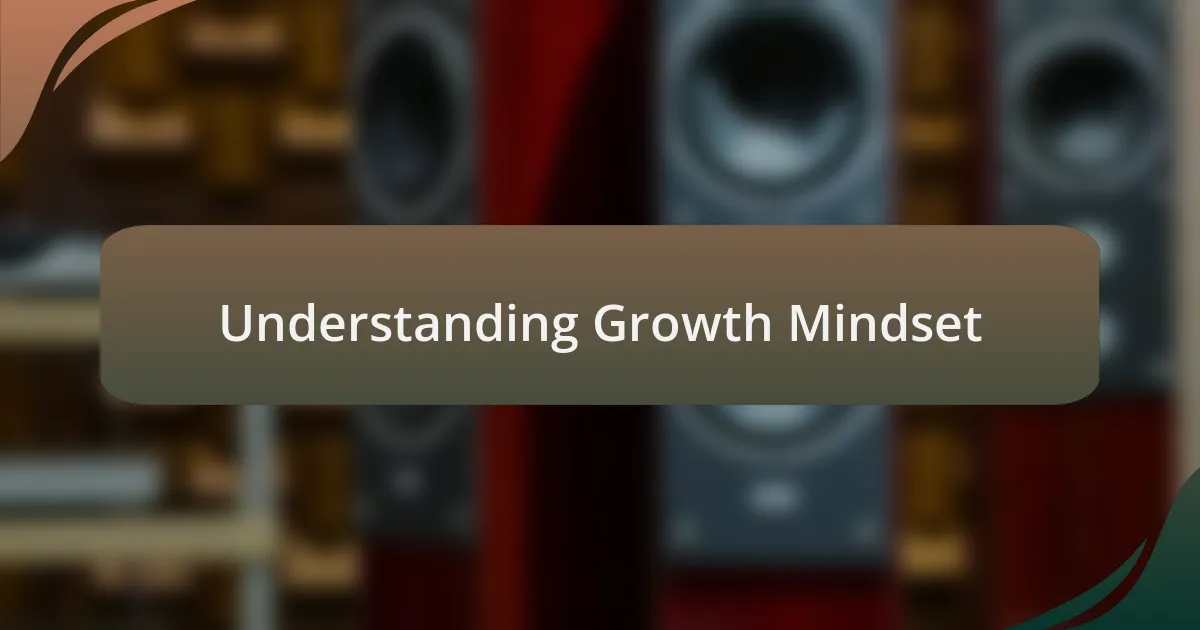
Understanding Growth Mindset
Understanding a growth mindset is all about believing that abilities can be developed through dedication and hard work. I remember a time when I struggled to play a challenging piece on the piano. At first, I felt disheartened, but then I shifted my perspective, embracing the idea that practice would lead to improvement. Have you ever felt stuck in a skill, only to realize that persistence can turn frustration into triumph?
This mindset shifts our focus from a fixed view of talent to one that celebrates progress and effort. In my experience, when students understand that mistakes are valuable learning opportunities, they become more enthusiastic about their musical journey. Isn’t it amazing how reframing our thoughts can transform our approach to challenges?
Moreover, cultivating a growth mindset fosters resilience. I’ve seen students bounce back from setbacks, hitting the keys with renewed energy after stumbling through a difficult section. This kind of perseverance not only enhances musical skills but also builds character, empowering them to tackle any challenge that lies ahead. How can we, as educators, encourage our students to embrace this journey of growth in their music education?
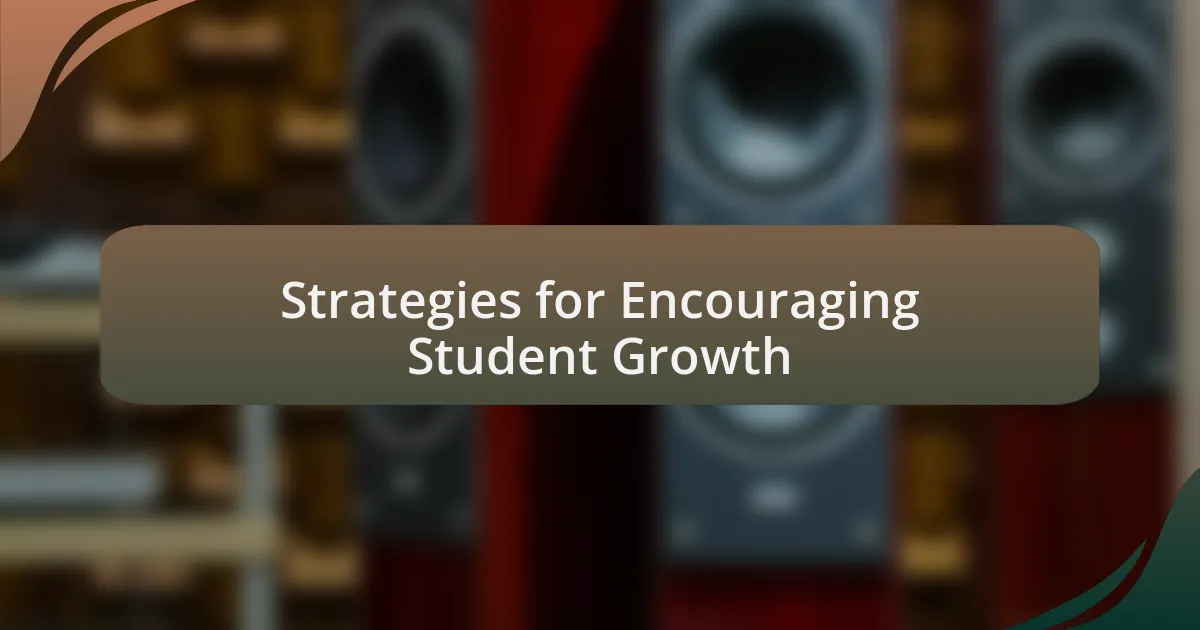
Strategies for Encouraging Student Growth
To encourage student growth, incorporating regular feedback is essential. I vividly recall a moment during rehearsals when I decided to offer targeted suggestions to a student struggling with rhythm. Rather than pointing out what went wrong, I highlighted what they did well, then gently guided them toward a solution. Have you ever noticed that people respond more positively to constructive guidance? It’s about creating an atmosphere where students feel secure in taking risks.
Another effective strategy is setting incremental goals. I remember a student who was preparing for a performance. Instead of focusing solely on the final piece, we broke the process down into weekly targets. Each small achievement made them more confident, and their excitement grew with every milestone. Isn’t it fascinating how celebrating little victories can fuel a student’s passion for music?
Encouraging collaboration also plays a significant role. In my classes, I often pair students to work on duets, allowing them to learn from each other. The joy I see when they share tips and support one another is inspiring. Have you witnessed the magic of peer learning? It fosters a sense of community that reinforces their growth, reminding them that they are not alone on this journey.
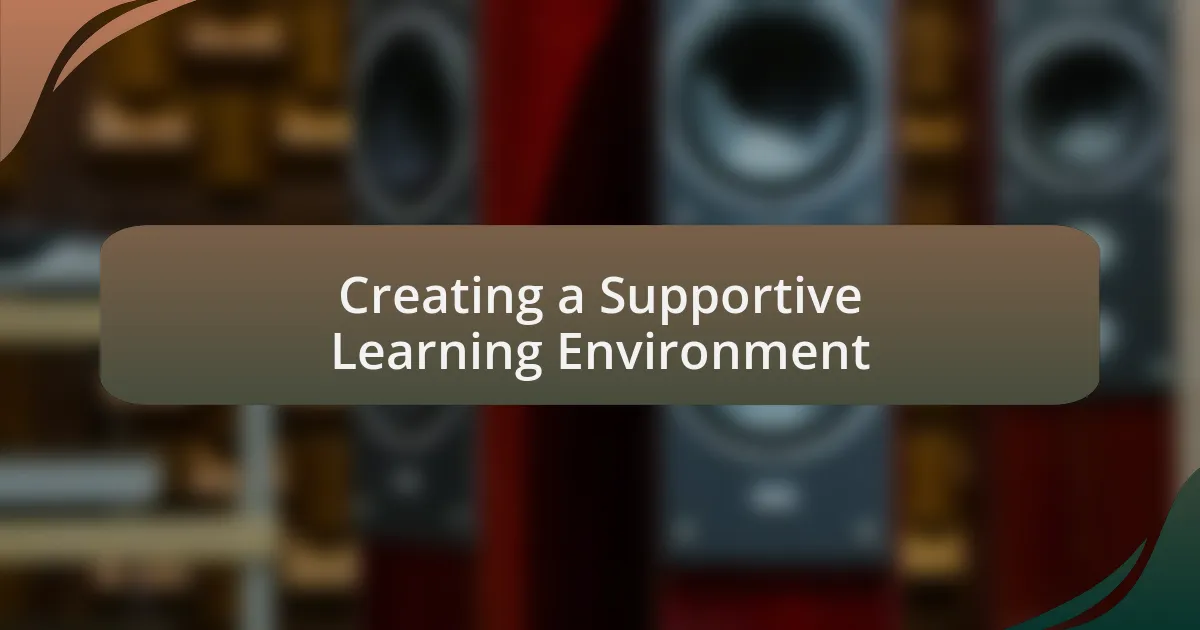
Creating a Supportive Learning Environment
Creating a supportive learning environment begins with establishing trust among students. I recall a moment when I introduced a circle time in my classes, where everyone shared their experiences with music. It was heartwarming to witness vulnerabilities being shared, as students realized they weren’t alone in their struggles. Have you ever seen how openness can build a community? That shared space encourages risk-taking and amplifies growth.
Additionally, maintaining a positive reinforcement strategy can significantly impact how students view their journey. One day, I celebrated a student’s determination to practice even when they felt discouraged. I praised their effort publicly, and it transformed their demeanor. It’s astonishing how a few kind words can reignite someone’s enthusiasm. Don’t you think that acknowledgment makes students feel valued and understood?
Moreover, I find it crucial to provide resources that cater to various learning styles within the classroom. During one lesson, I integrated visual aids and audio clips to accommodate different preferences. The glow on a student’s face when they finally grasped a challenging concept truly resonated with me. Isn’t it rewarding to adapt your approach and see the joy of understanding wash over them? Creating such an inclusive environment not only promotes engagement but also nurtures a lasting love for music.
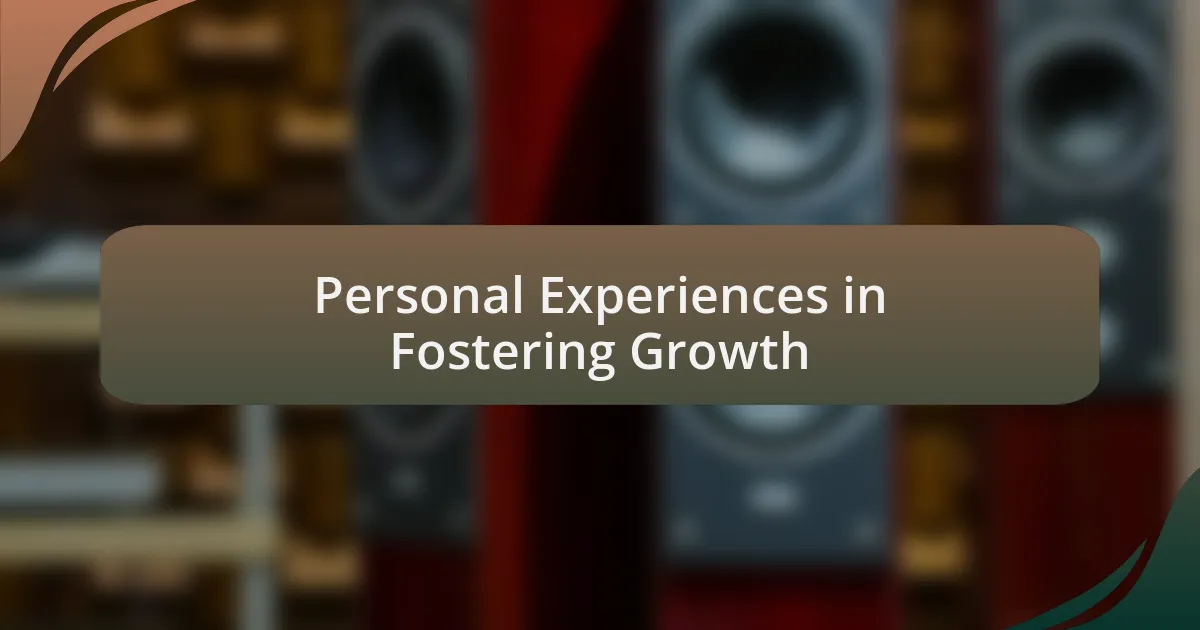
Personal Experiences in Fostering Growth
Fostering growth in students often comes from the moments that catch us by surprise. I remember a lesson where I encouraged a student to experiment with improvisation during a group performance. Initially hesitant, they ultimately soared through the piece, and it was in that moment of unleashed creativity I saw how stepping out of their comfort zone can spark real growth. Doesn’t it feel incredible when students surprise themselves?
Another experience that stands out to me involved a student who frequently voiced self-doubt about their musical abilities. During a one-on-one session, I shared my struggles from my early days learning an instrument. I could see the shift in their eyes; suddenly, they understood that everyone has hurdles to overcome. When they finally hit the right note after weeks of trying, it felt like we’d celebrated a shared victory. Isn’t that connection what makes teaching so rewarding?
I’ve also discovered that encouraging peer feedback can deepen growth. There was a project where students critiqued each other’s performances, which initially felt daunting to them. Witnessing them become more comfortable with sharing constructive insights was a game changer. The dialogue that arose not only boosted their confidence but also taught them the power of collaboration. Don’t you love seeing students build each other up in ways we can only hope for?
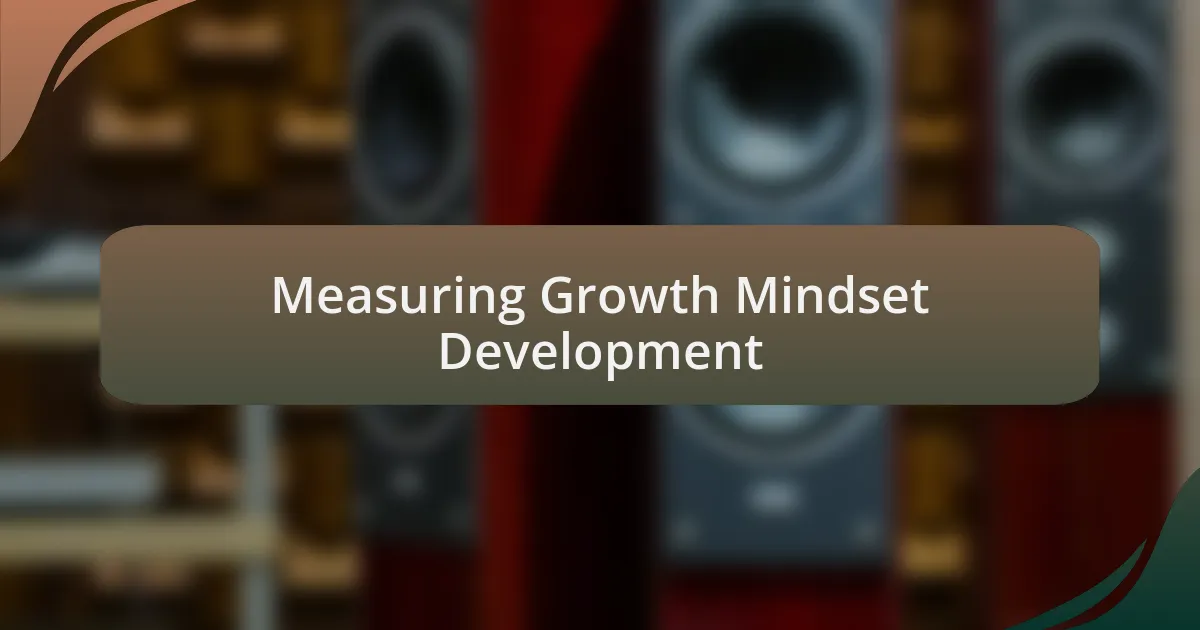
Measuring Growth Mindset Development
Measuring the development of a growth mindset in students can often feel like a guessing game, but I’ve found a few approaches that reveal more than meets the eye. For instance, I’ve used reflective journals where students document their thoughts on challenges and successes in music. The entries offer precious insight into their mindset shifts over time; it’s fascinating to read their evolving perceptions of setbacks as part of their learning journey.
Another effective method I’ve implemented is through consistent check-ins with my students. After completing a particularly challenging piece, I ask them to rate their confidence level and describe how they felt throughout the process. The change in their responses—especially when they acknowledge improvement, however small—truly highlights their developing resilience. Have you ever noticed how verbalizing progress can solidify those feelings of growth?
I also utilize performance critiques, where students evaluate their own and each other’s work. Initially, many students focused solely on mistakes, but over time, I saw a shift towards recognizing effort and improvement. Personally, it was uplifting to see them embrace feedback, not as criticism, but as a stepping stone. Isn’t it rewarding when students shift their focus from perfection to progress?